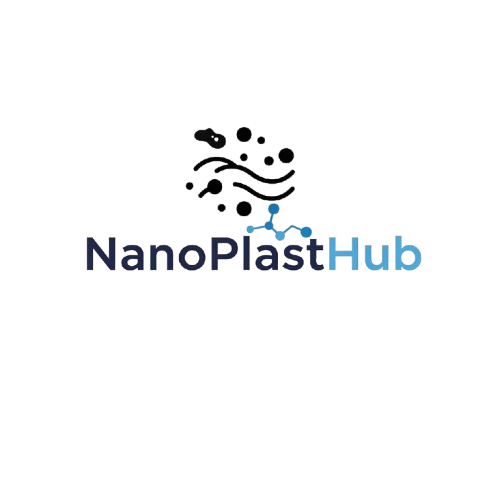
Biocolloids Research Group - https://www2.sci.u-szeged.hu/physchem/bioc/
István Szilágyi
The Biocolloids Research Group is located at the Department of Physical Chemistry and Materials Science of the University of Szeged and is part of the Interdisciplinary Centre of Excellence. The leader, Dr. István Szilágyi, moved his research group from Switzerland to Szeged with the help of the Hungarian Academy of Sciences’ Lendület program, which he has already been awarded twice. He habilitated at the Universities of Geneva and Szeged, earned a doctorate from the Hungarian Academy of Sciences, and is the lead researcher of several domestic and international projects. The group’s main professional field is fundamental research related to colloid chemistry, highlighting the development of enzyme-mimicking nanoparticles, and studies related to micro- and nanoplastic pollutants. In the latter topic, the main emphasis is placed on the stability, migration and transport of plastic particles, examining the physicochemical aspects of these processes. The research group operates an internationally renowned platform using light scattering-based techniques, which provides a unique opportunity to determine the shape, size and charge of plastic pollutants in waters.
keywords: colloids; nanoplastic; light scattering; colloidal stability; research; PFAS; nanozyme

Environmental Plant Biology and Protein Biochemistry Group - https://www.facebook.com/envplantbioszeged
Gábor Feigl
In collaboration with our research partners and building on our previous results in nanomaterial research, our group was the first in Hungary to investigate the effects of plastic pollution on plants. With several years of experience, we study how microplastics influence early plant development, root system architecture, and plant–soil–microbe interactions. Using in vitro and rhizotron systems, we examine plant physiological and ecotoxicological responses, identify biomarkers, and assess impacts on soil health. Our recent publications on COVID-related plastic waste and our reviews on the effects of plastics on plant–soil systems support our leading national role in this emerging research field. As part of the HU-RIZONT PLAGROSYS project, in collaboration with the Department of Biotechnology and Microbiology and the Department of Ecology, we are now expanding our research to explore the effects of nanoplastic pollution on the rhizosphere–crop–animal ecosystem.
keywords: microplastics, nanoplastics, plant–plastic interaction, rhizosphere, root development, soil health, ecotoxicology, biomarkers, environmental stress, plastic pollution, agroecosystems, plastic waste, COVID-related plastic, in vitro systems, rhizotrons


Momentum Plant NaNObiology Research Group - https://plantnanobio.com/
Zsuzsanna Ördögné Kolbert
The group leader is Dr. Zsuzsanna Ördögné Kolbert, habilitated associate professor of the Department of Plant Biology USZ, doctor of the Hungarian Academy of Sciences. The work of the HAS-USZ Momentum Plant NaNObiology Research Group focuses on three areas: (1) alleviating the zinc deficiency-associated damages by seed treatment with zinc oxide nanoparticles, (2) enhancing drought tolerance with nano nitric oxide donors and plasma-activated fluids, (3) enhancing plant resistance to fungal pathogens with nano nitrogen oxide donors. The research is carried out in greenhouse model systems, with model and agricultural plant species, using a multi-level approach. The responses to zinc deficiency, drought and fungal infection are examined at the cellular, organ and organism levels, ranging from physiological responses to molecular mechanisms. Furthermore, a holistic approach, i.e. transcriptomics, proteomics and metabolomics is applied to characterize the tolerance-enhancing effect of nanomaterials.
keywords: zinc deficiency, fungal pathogens, nano nitric oxide donors, plants, plasma-activated fluids, drought

Laser and plasma spectroscopy research group (GLPS) - http://www2.sci.u-szeged.hu/glps/indexh.htm
Gábor Galbács
The research group has been operating since the 1990s and is led by Professor Dr. Gábor Galbács. The research is mainly carried out using inductively coupled plasma atomic and mass spectrometry (ICP-AES, ICP-MS), laser ablation (LA), laser-induced plasma spectroscopy (LIBS), electric discharge plasmas, diode laser absorption and fluorescence spectroscopy, microfluidic and 3D-printed devices. Its aim is to develop methods, tools and data evaluation solutions with which the qualitative and quantitative composition of the chemical components of the examined material systems can be determined as sensitively, selectively and accurately as possible. The group deals with chemical mapping implemented using the aforementioned spectroscopic methods, the preparation, analytical application and characterization of nano- and microparticles and structures, the development of optochemical sensors, the application of machine learning methods, the analysis of individual cells, and technical design and device construction tasks for analytical purposes.
keywords: laser and plasma spectrometric trace analysis, sample preparation for trace analysis, characterization of micro- and nanoparticles, development and application of machine learning methods, preparation of polymer microstructures

Epithelial Cell Signalling and Secretion Research Group - https://episignal.wixsite.com/episignal
József Maléth
The Epithelial Cell Signalling and Secretion Research Group operates at the Faculty of Medicine, University of Szeged. The group's primary goal is a thorough understanding of epithelial cell functions, particularly regarding inflammatory and neoplastic diseases of the pancreas. Epithelial cells play a crucial role in regulating the body’s ion and fluid balance, and their dysfunction can lead to severe diseases such as cystic fibrosis and pancreatitis. In their research, the group employs advanced microscopic imaging techniques, molecular biology methods, and various disease models to explore the signaling pathways of epithelial cells and their roles in disease development. The research group applies innovative approaches, such as 3D human organoid models, enabling patient-specific responses to be studied and new therapeutic strategies to be tested. Their work is multidisciplinary and translational, aiming to translate basic research findings into clinical practice, thereby developing new diagnostic and therapeutic solutions. These efforts contribute to improved understanding and treatment of inflammatory and neoplastic diseases. Within the NOEMA project, the group investigates the health effects of micro- and nanoplastics (MPl and NPl), systematically analyzing how these particles enter the human body and exploring their impacts at the cellular and organ level under conditions of chronic, low-dose exposure.
keywords: nanoplastics, epithelial cell, cell damage, organoid culture, in vivo models
SZTE Nanoműanyag Kutatási Központ
SZTE Nanoplastic Research Hub
URL: https://u-szeged.hu/nanoplasthub
e-mail: nanoplasthub@szte.hu
Bolyai Épület
6720 Szeged, Rerrich Béla tér 1
Magyarország